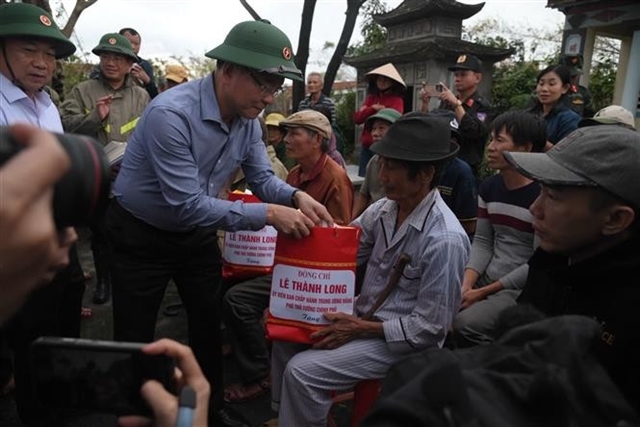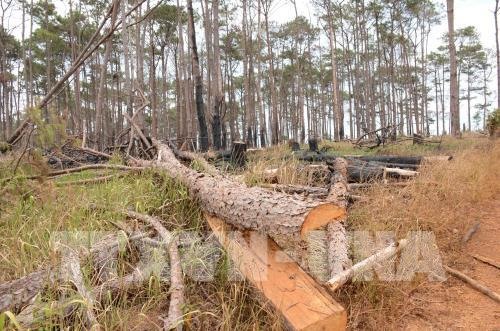 Environment
Environment

The number of forestry law violations in the first four months of 2018 declined by 31 per cent from last year to 4,226, reported the Việt Nam Administration of Forestry.
 |
| The number of forestry law violations in the first four months of 2018 declined by 31 per cent from last year to 4,226, reported the Việt Nam Administration of Forestry. — VNA/VNS Photo |
HÀ NỘI — The number of forestry law violations in the first four months of 2018 declined by 31 per cent from last year to 4,226, reported the Việt Nam Administration of Forestry.
These violations damaged 252ha of forest areas, down by 47 per cent year-on-year.
In April alone, 1,140 violations were reported, although it was down by 41 per cent year-on-year. Two hundred cases of deforestation took place during the month, mostly in the northern mountainous province of Điện Biên’s Mường Nhé District and the Central Highlands province of Đắk Nông.
The figure represented a decrease of 42 per cent from last year.
The country also recorded 14 forest fires in April, destroying 23ha of forests. Most of the fires broke out in the northern provinces, including Quảng Ninh, Lai Châu and Bắc Giang, due to a local widespread dry condition and the slash-and-burn method of farming. The drop in violations was attributed to drastic implementation of forest protection measures by local authorities. The Việt Nam Administration of Forestry urged localities to continue their efforts to reduce the number of violations and damaged forest areas by 20 per cent compared to 2017.
So far this year, the northern localities have planted 40,720ha of forests, a decline of 6.1 per cent year-on-year, according to the Ministry of Agriculture and Rural Development.
Rapid tree planting has been seen in the north central region with 12,051ha, up 26.3 per cent, and the Red Delta region with 6,635ha, down 8.7 per cent.
Việt Nam aims to increase the national forest coverage to 42 per cent, equivalent to 14.4 million hectares, by 2020, according to the target programme on sustainable forest development during 2016-2020 recently approved by the Prime Minister. The country expects to achieve an annual forestry production growth rate of 5.5 to six per cent and artificial forest produce of 20cu.m. per hectare per year.
Under the programme, 15 per cent of degrading forests, especially special-use forests, will be recovered and preserved by 2020. An additional 100,000ha of special-use forests will be planted, while the number of rare species that are on the brink of extinction will be increased. — VNS




